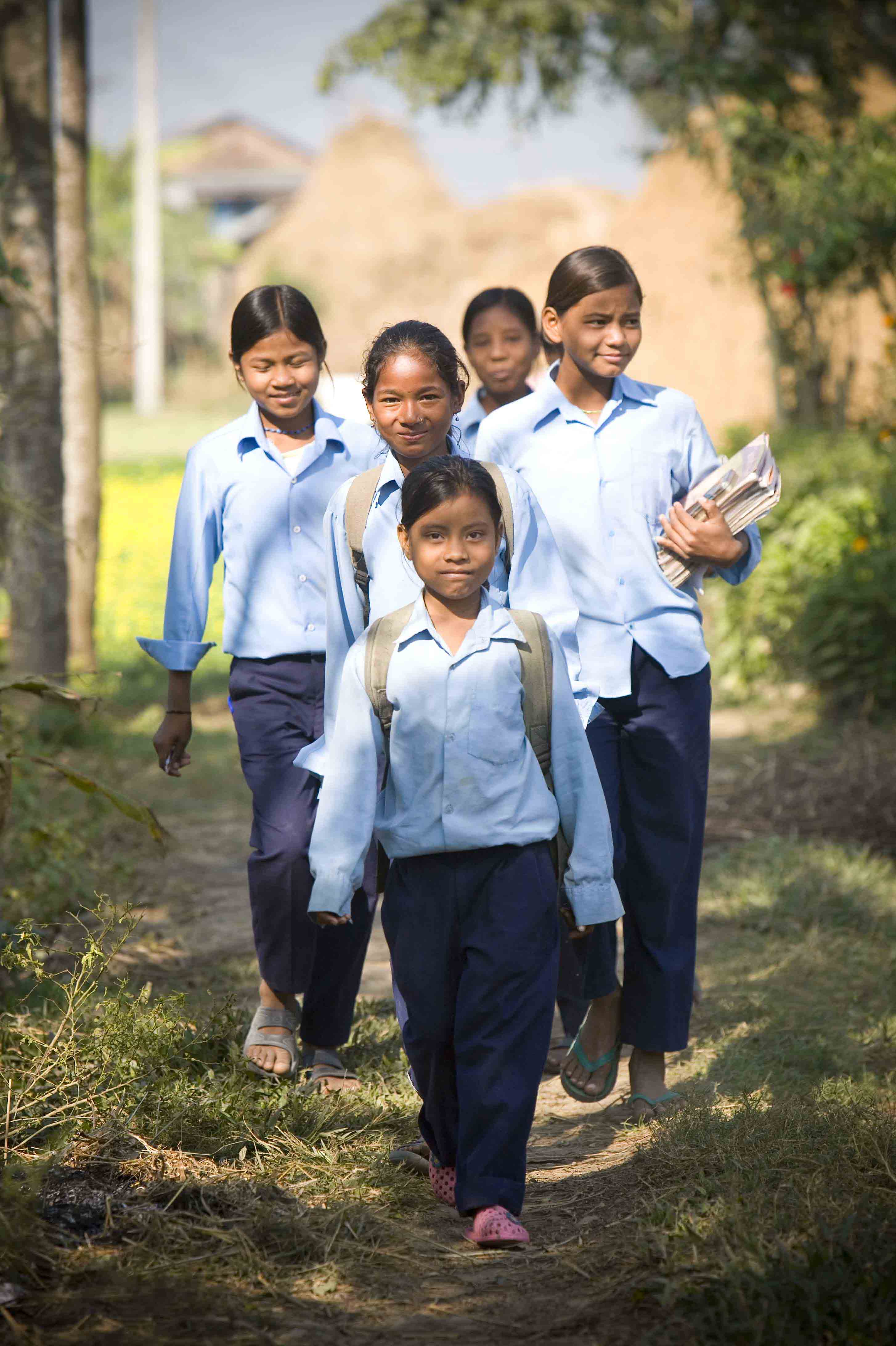A recent case of a child marriage in village in Nepal inspires questions and reflection on women’s empowerment efforts
By Puja Singh, recently of Heifer Nepal staff
Her piercing kohl-lined eyes stared at me from the pages of The Guardian’s Poverty Matters blog. The red dot on her forehead inspired a range of questions. At 14, Deumaya from Gorkha District in Nepal was married to a boy two years older. She said it was a love marriage. A 14-year-old girl falling in love made perfect sense. Yet a 14-year-old girl getting married amid a massive government and NGO drive against child marriage in Nepal did not. The stats were given loud and clear by the writer Ola Perczynska; 41 percent of the girls in Nepal still get married before age 18. Deumaya lives with her husband now. Perhaps soon she will bear a child. Perhaps she will stop going to school. The agenda for change, in this case, has clearly failed. The government has failed and the international development agencies have failed. I have clearly failed.
I deconstruct the story in my mind time and again. I try to reason with Deumaya’s reality. I try to find the facts but fail. I can only assume. Based on the last five years of my life working with women in rural villages of Nepal in my role at Heifer International, I can assume that Deumaya needed to elope, to make a place for her in this man’s life. I can assume that she needed to feel that her feelings were validated. And I can assume that she has not seen a woman in her family or maybe even her village benefit from an education or an enterprise. I can assume that the mantras of “stay in school,” “stop child marriage” and “women are equal to men” did not make sense to her.

I can assume that Deumaya’s mother’s reality was the same. Nowhere in her house or her village could she see the reality that “a woman can be more than that.” Though that picture is portrayed in so many NGO-funded trainings and government-sponsored radio programs, the agenda of stopping child marriage by making it criminal is not real yet to Deumaya. Going to school to read and write and perhaps getting married to a man and having his children is real. In Nepal today, we ask many young girls like Deumaya to be what they can’t see. She does see the NGO lady, the actress on TV, the occasional lady entrepreneur and perhaps even the female political candidate. But they are not her mother, her aunt, her sister or her neighbors. They are not her reality.
And so my thoughts go back to Urmila Chaudhary of Belsi village in Chitwan. Last we met, she, a high school English teacher, was hurrying home to get a bite to eat before she ran out again to coach the neighborhood children at their village youth center. I remember five years before, I had met her when she was preparing for her high school graduation, one of first group of girls in the entire village to graduate. I remember her sitting next to her mother, Panditni Chaudhary, when she told me how the money earned from two goats Heifer had given her was the only reason Urmila was still in school. Of the many girls Urmila’s age in her village, one is now a certified nurse and another in veterinary school. The issue here is perhaps not finances. Deumaya is still in school. Perhaps her parents also have the money to send her to school. But maybe what Deumaya does not have is a mother who embodies the slogans and the teachings. A woman she can see and perhaps strive to be.
In the photo at the very top of this post are the two daughters of Chammi Gurung in Shaktikhor, who has been in a Heifer project since 2011 and is now the president of an all-women cooperative. I keep this photo with me, because I know that her children’s future will prove the efficacy of Heifer’s work in this village. Everything has to come full circle. It is the way this world works. Perhaps Deumaya could meet such women and see that what she has been told is not a prophecy. Perhaps she could have changed her mind.
This is not a criticism of all that is being done in Nepal and other countries like it in terms of development and progress. This is not a disapproval of Deumaya’s choices in life. It’s merely an understanding of how a girl grows up and becomes a woman.
I am the granddaughter of a woman who sent five daughters to school, university and then to work as she raised their children. She had no sons. And in a culture that only validated a woman’s worth when she could birth a son to light her funeral pyre, she was my reality. It is because I have seen her that I can be what I am today.